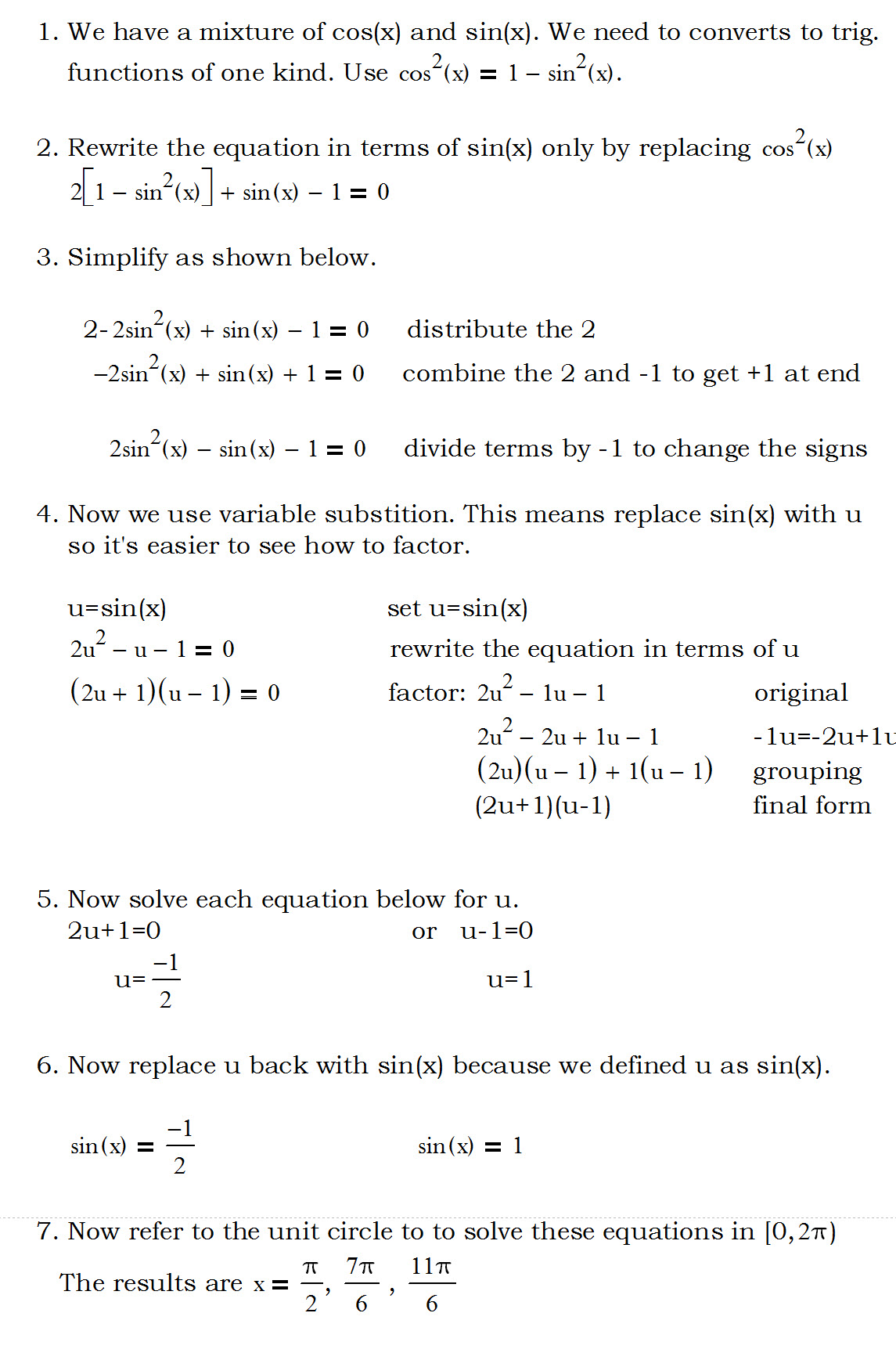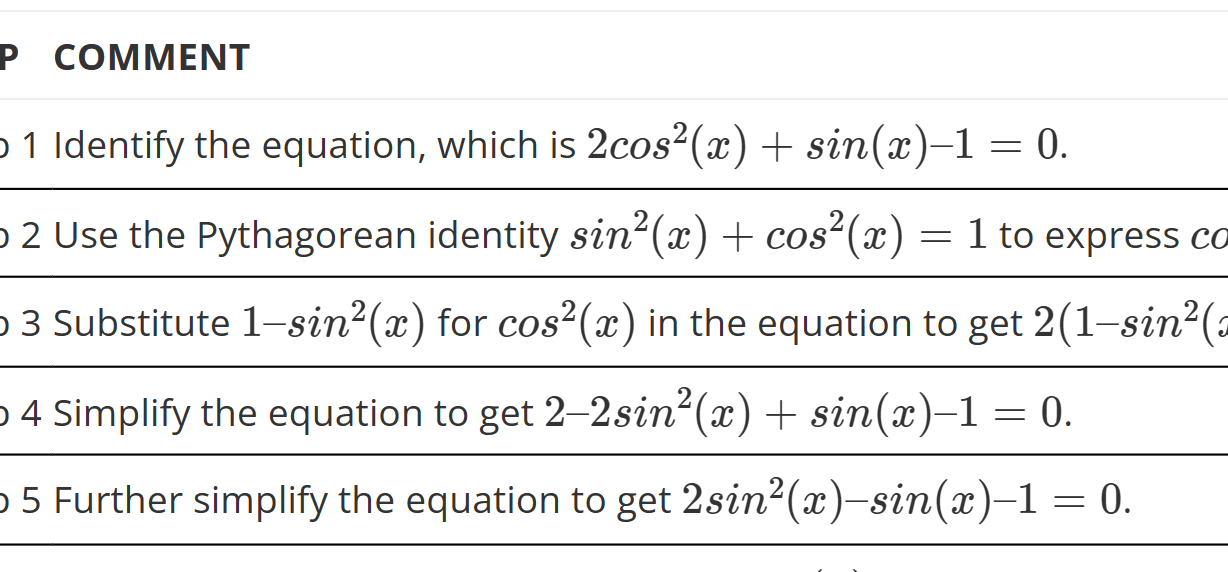| Step |
Comment |
| Step 1 |
Identify the equation, which is \(2cos^2(x) + sin(x) – 1 = 0\). |
| Step 2 |
Use the Pythagorean identity \(sin^2(x) + cos^2(x) = 1\) to express \(cos^2(x)\) as \(1 – sin^2(x)\). |
| Step 3 |
Substitute \(1 – sin^2(x)\) for \(cos^2(x)\) in the equation to get \(2(1 – sin^2(x)) + sin(x) – 1 = 0\). |
| Step 4 |
Simplify the equation to get \(2 – 2sin^2(x) + sin(x) – 1 = 0\). |
| Step 5 |
Further simplify the equation to get \(2sin^2(x) – sin(x) – 1 = 0\). |
| Step 6 |
This is a quadratic equation in terms of \(sin(x)\). We can solve it by factoring: \(2sin^2(x) – sin(x) – 1 = 0\) factors to \((2sin(x) + 1)(sin(x) – 1) = 0\). |
| Step 7 |
Set each factor equal to zero and solve for \(sin(x)\) to get \(sin(x) = -1/2\) or \(sin(x) = 1\). |
| Step 8 |
Find the values of \(x\) that satisfy \(sin(x) = -1/2\). These are \(x = 7π/6, 11π/6\). |
| Step 9 |
Find the values of \(x\) that satisfy \(sin(x) = 1\). This is \(x = π/2\). |
| Step 10 |
Note that these are the solutions in the first period \([0, 2π)\). The general solutions can be found by adding \(2πn\) to each of these solutions, where \(n\) is an integer. |




